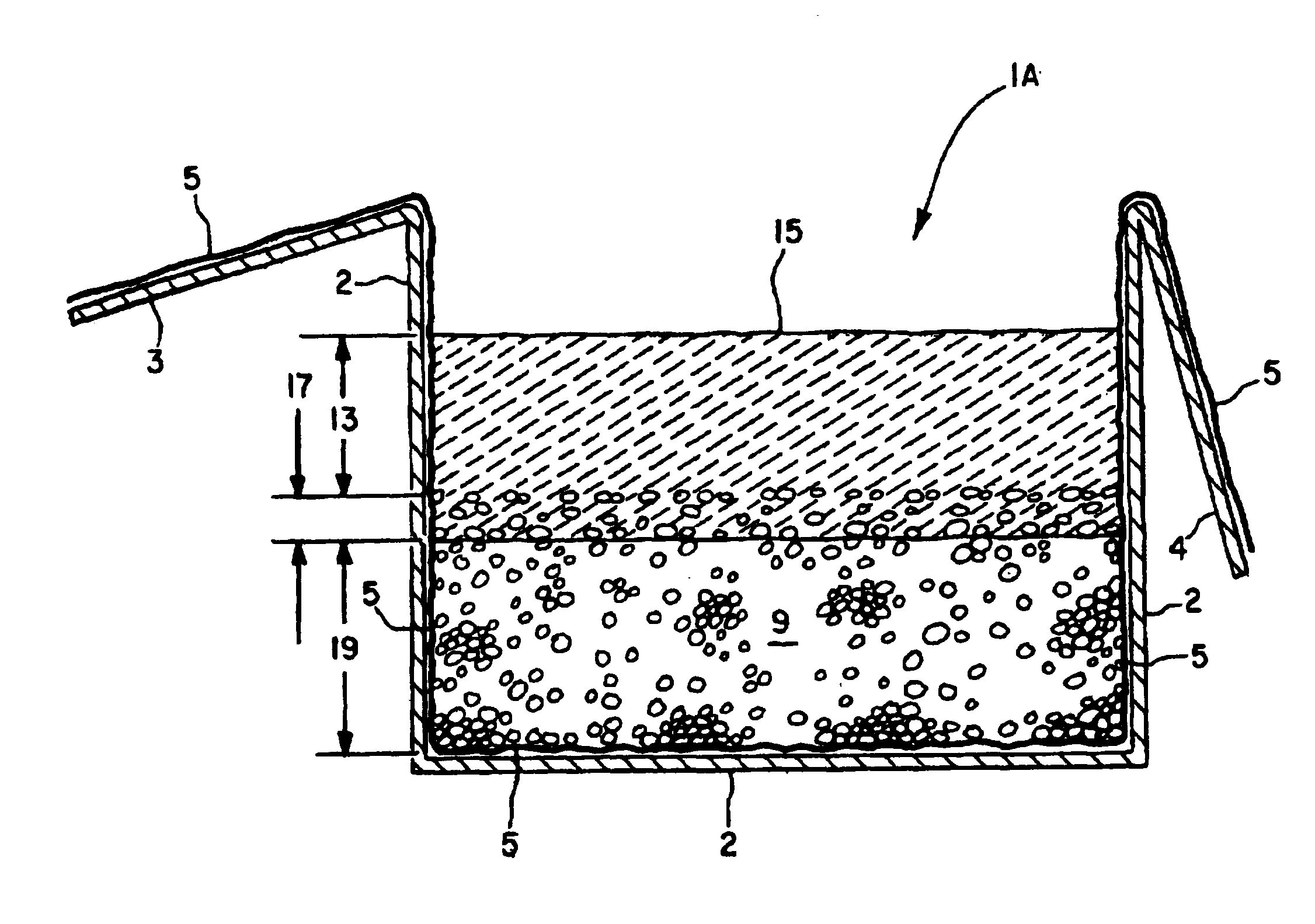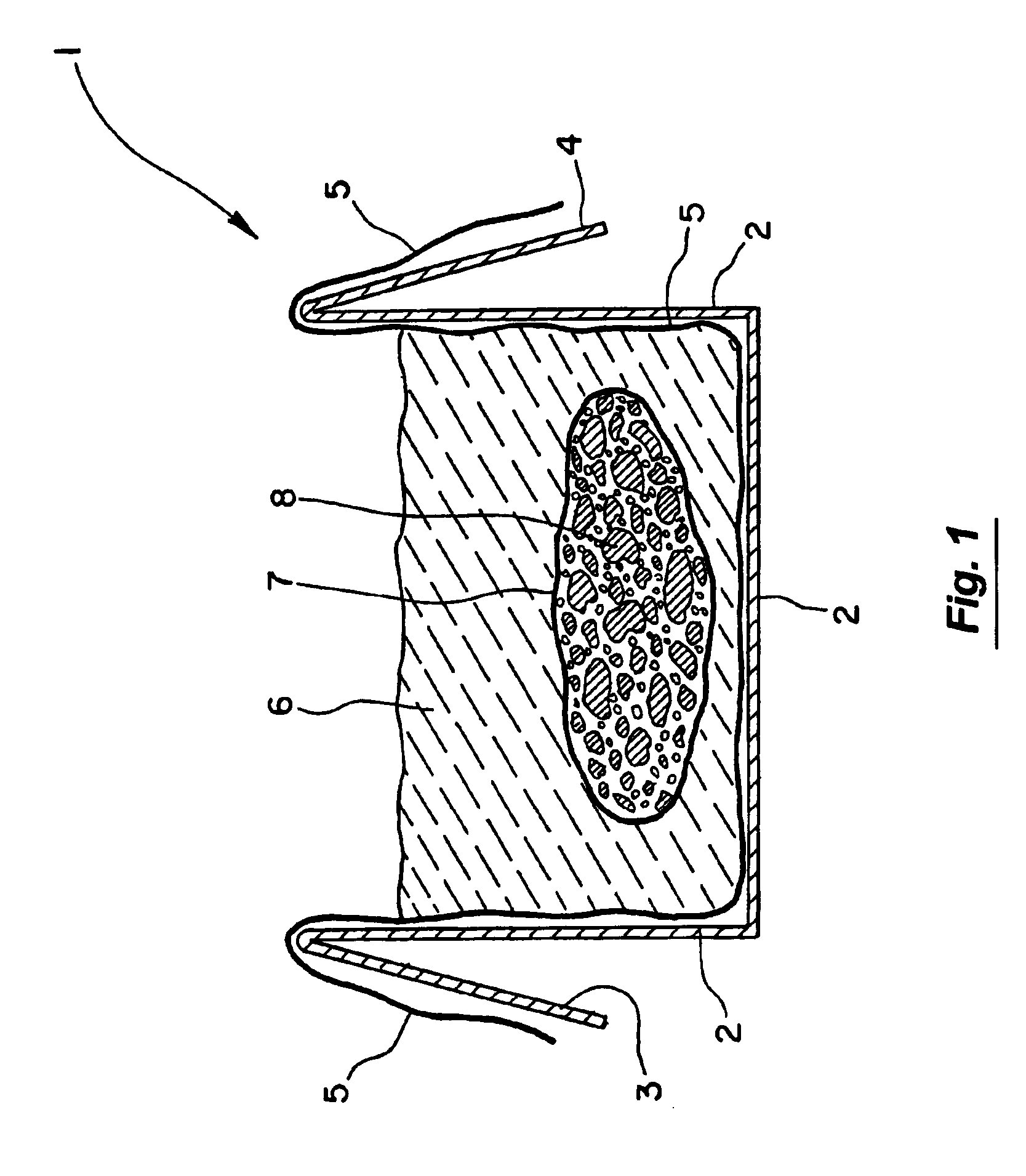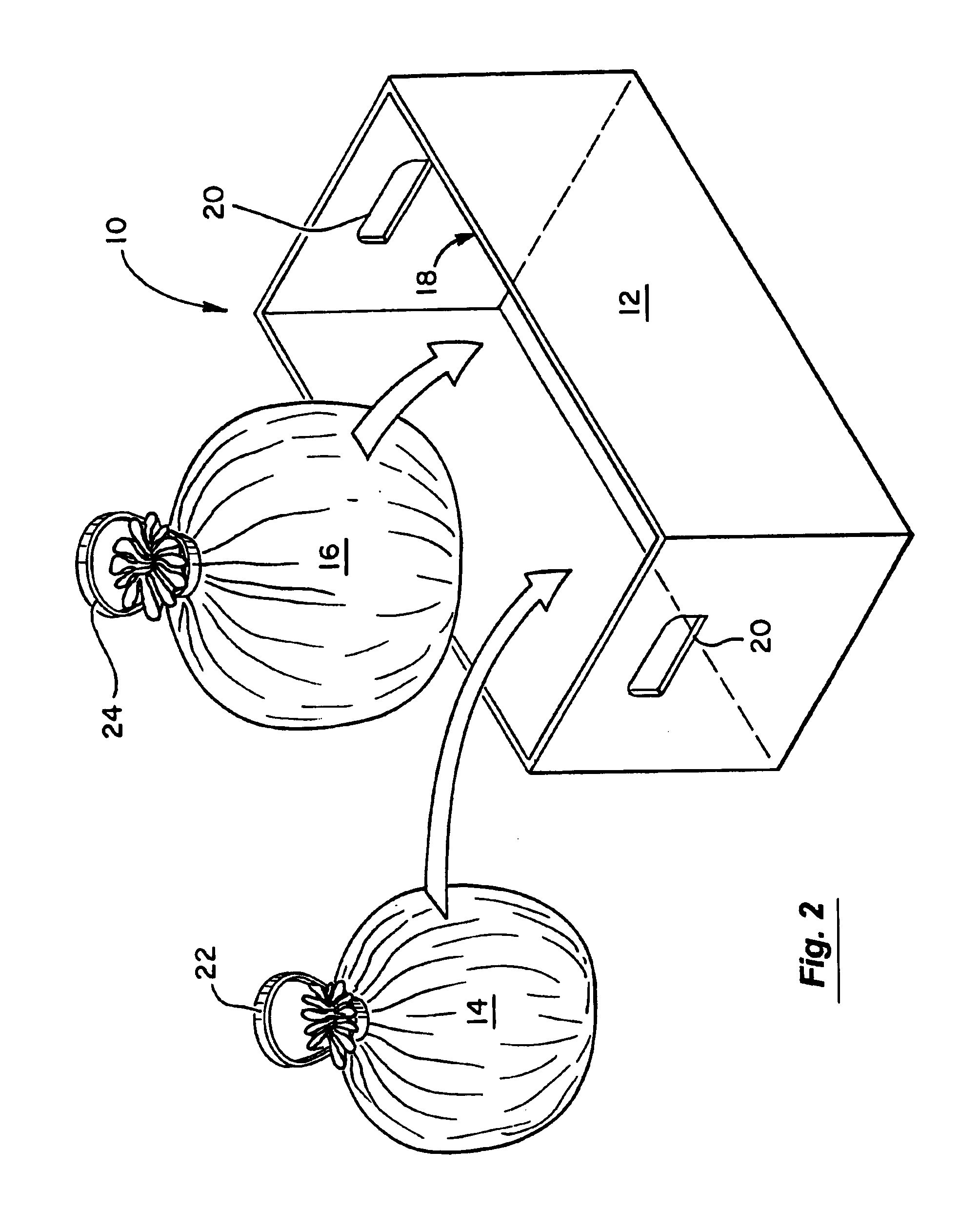Binder/aggregate/container systems
a technology of binders and containers, applied in the direction of thin material handling, ways, constructions, etc., can solve the problem that the temperature of the binder is not sufficient to melt any bag employed in the system
- Summary
- Abstract
- Description
- Claims
- Application Information
AI Technical Summary
Benefits of technology
Problems solved by technology
Method used
Image
Examples
example i
[0052]A road repair composition for the practice of this invention would be comprised of (1) from about 18 to about 90 weight percent (wt. %) asphaltic material, (2) from about 2 to 24 wt. % synthetic elastomers and / or polymers and (3) from about 5 to 50 weight synthetic and naturally occurring modifier materials such as clays (e.g., kalinite), diatomaceous earth, calcium carbonate and fiber may be part of the system. Relatively small amounts (e.g., 5-10 wt. %) antioxidants such as carbon black-sulfur also may be employed. A preferred specification relating to the physical properties of the binder portion of such a composition (and the ASTM test method used to test that property) are given in Table I.
[0053]
TABLE IPropertyTest MethodTypical SpecificationCone Pen @ 25 CASTM D-532990 MaximumResilience @ 25 CASTM D-532925% MinimumSoftening PointASTM D-36175 Deg. F. MinimumFlow @ 60 CASTM D-53293 MM MaximumCuring TimeMoving Traffic30 Minutes Maximum
example ii
[0054]Another typical asphaltic material for a road repair composition would be comprised of about (1) 30 to about 70 weight percent (wt. %) asphaltic material, (2) from about 2 to about 18 wt. % synthetic elastomers or polymers and (3) from about 6 to about 40 wt. % percent modifiers and antioxidants. The physical properties and specifications relating to the binder portion of this composition (and the ASTM test for that property) are given in the following Table II.
[0055]
TABLE IIPropertyTest MethodTypical SpecificationCone Pen @ 50 CASTM D-532990 MaximumFlow @ 70 CASTM D-53295 MM MaximumSoftening PointASTM D-5329180 Deg. F. Minimum
[0056]A preferred bridge joint repair composition would be comprised of: (1) 40-70 weight percent asphaltic material, (2) 3-20 weight percent polymers or elastomers and (3) 10-20 weight percent synthetic or natural occurring modifiers. The remainder of the system would be an aggregate material that comprised from about 15 to about 75 percent of the overa...
PUM
 Login to View More
Login to View More Abstract
Description
Claims
Application Information
 Login to View More
Login to View More - R&D
- Intellectual Property
- Life Sciences
- Materials
- Tech Scout
- Unparalleled Data Quality
- Higher Quality Content
- 60% Fewer Hallucinations
Browse by: Latest US Patents, China's latest patents, Technical Efficacy Thesaurus, Application Domain, Technology Topic, Popular Technical Reports.
© 2025 PatSnap. All rights reserved.Legal|Privacy policy|Modern Slavery Act Transparency Statement|Sitemap|About US| Contact US: help@patsnap.com



